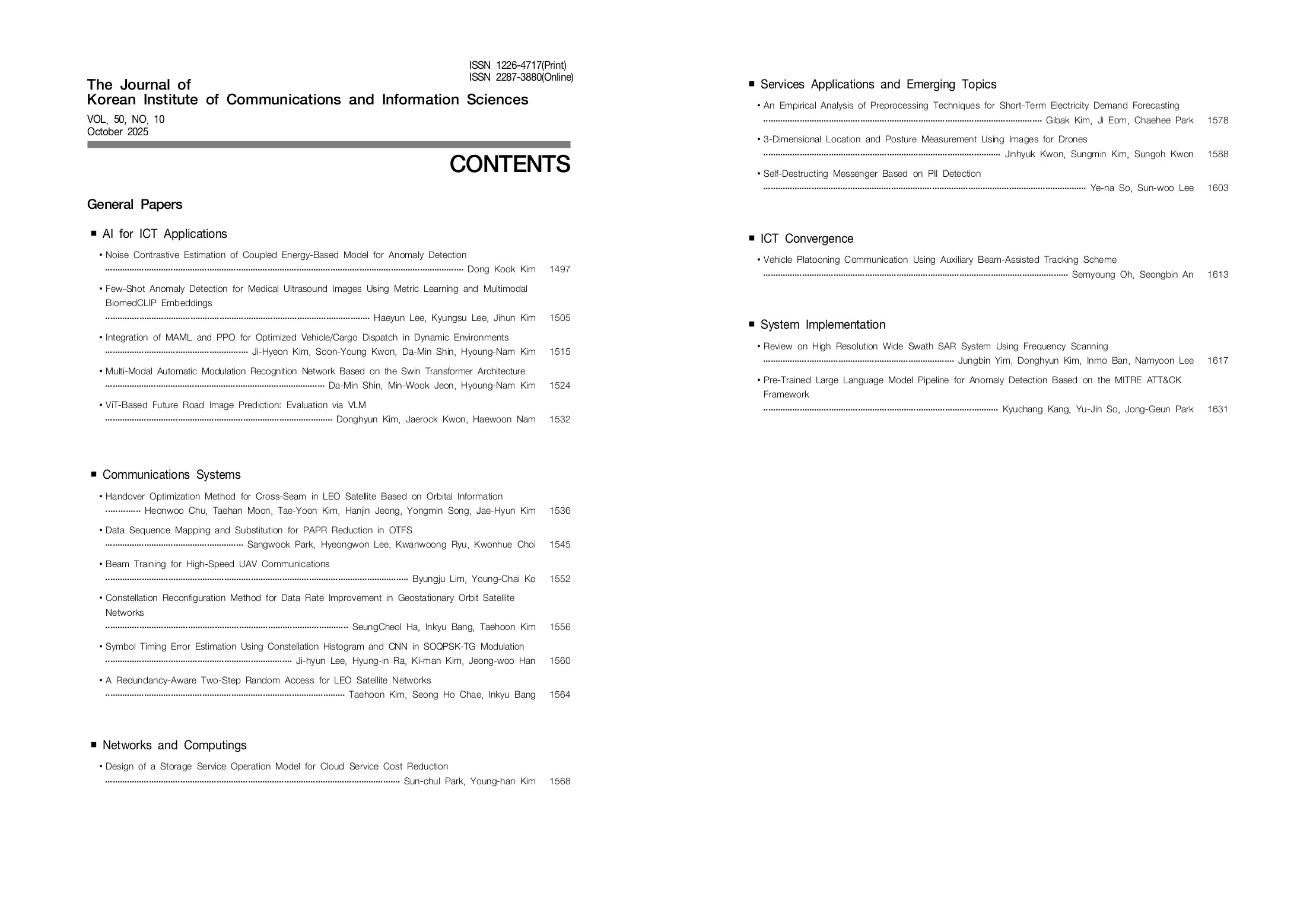ViT-Based Future Road Image Prediction: Evaluation via VLM
Vol. 50, No. 10, pp. 1532-1535, Oct. 2025
 10.7840/kics.2025.50.10.1532
10.7840/kics.2025.50.10.1532
PDF Full-Text
Abstract
Statistics
Cumulative Counts from November, 2022
Multiple requests among the same browser session are counted as one view. If you mouse over a chart, the values of data points will be shown.
Multiple requests among the same browser session are counted as one view. If you mouse over a chart, the values of data points will be shown.
|
|
Cite this article
[IEEE Style]
D. Kim, J. Kwon, H. Nam, "ViT-Based Future Road Image Prediction: Evaluation via VLM," The Journal of Korean Institute of Communications and Information Sciences, vol. 50, no. 10, pp. 1532-1535, 2025. DOI: 10.7840/kics.2025.50.10.1532.
[ACM Style]
Donghyun Kim, Jaerock Kwon, and Haewoon Nam. 2025. ViT-Based Future Road Image Prediction: Evaluation via VLM. The Journal of Korean Institute of Communications and Information Sciences, 50, 10, (2025), 1532-1535. DOI: 10.7840/kics.2025.50.10.1532.
[KICS Style]
Donghyun Kim, Jaerock Kwon, Haewoon Nam, "ViT-Based Future Road Image Prediction: Evaluation via VLM," The Journal of Korean Institute of Communications and Information Sciences, vol. 50, no. 10, pp. 1532-1535, 10. 2025. (https://doi.org/10.7840/kics.2025.50.10.1532)
Vol. 50, No. 10 Index



